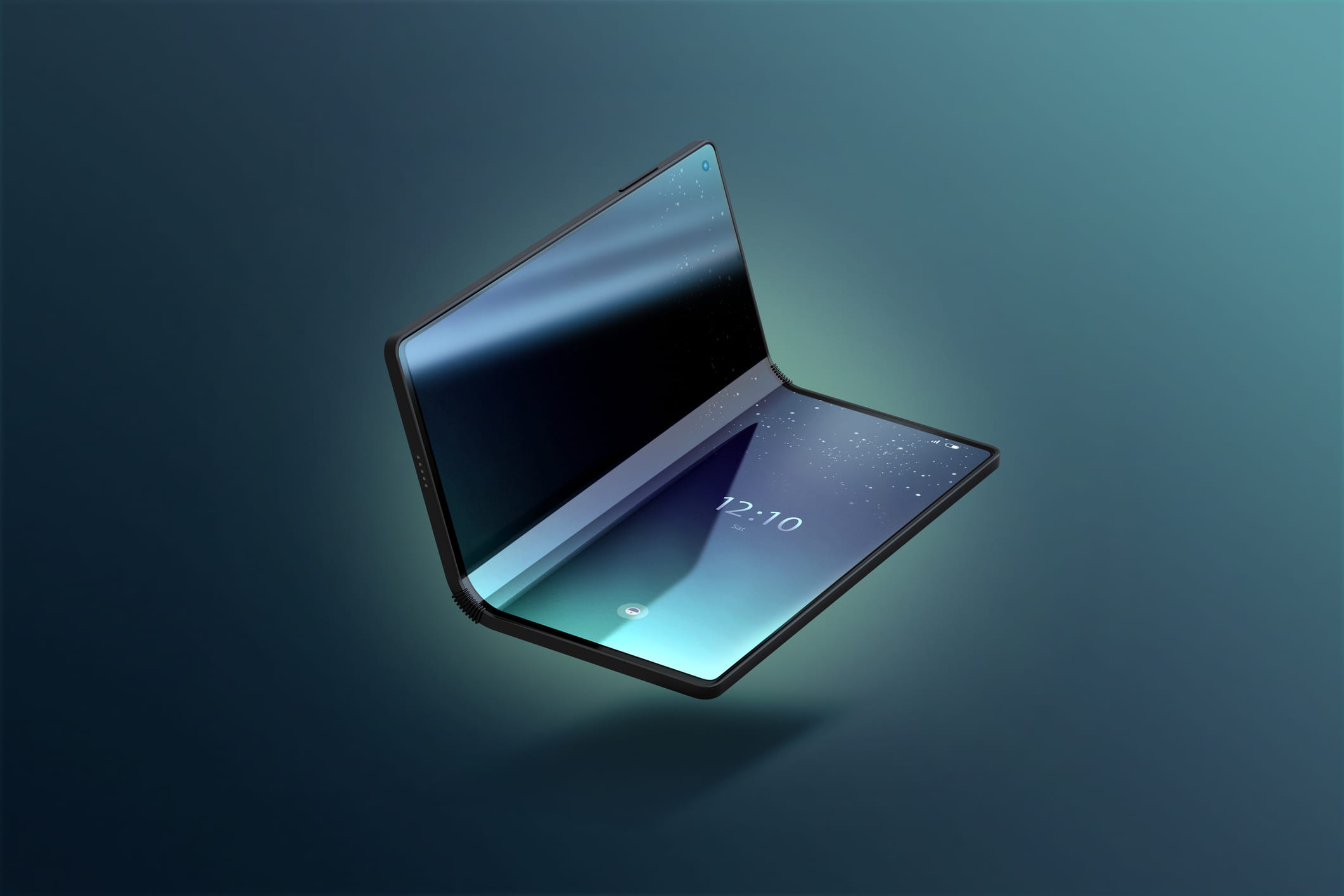This year saw a wave of foldable smartphone launches, with vendors showcasing cutting-edge engineering to tackle long-standing concerns around bulk and weight. Samsung upgraded its Fold and expanded its Flip lineup, HONOR pushed lighter book-style models into wider distribution, and numerous other vendors added new models, further expanding consumer choice. Most major Android vendors are now in the foldable race, experimenting with form factors, price points, and innovative engineering.
Even though the category is more crowded, global shipments were flat at 6.6 million units in H1 2025. China was the major exception, growing 32.8% year-on-year, predominantly driven by Huawei’s Mate and Pura X models. The second-largest foldable market, the US, grew modestly by 7% in H1 2025, driven mainly by Motorola’s Razr 2025 series.
Even though vendors are experiencing above-expected momentum with their recent launches, global foldable shipments are forecast to remain flat at 17.2 million units for the full year. However, 2026 is set to be a turning point. Anticipated added competition combined with flip shaped devices becoming more affordable is set to reignite foldable growth. Omdia forecasts foldable smartphone shipments to grow by a staggering 50% YoY in 2026 and carry momentum into 2027.
Yet, with foldables set to remain a niche segment making up a low single digit percentage of the total market, the purpose foldables serve within vendors business strategies and the path ahead have become key questions.
Foldables as a test of hardware leadership and innovation
Among the many smartphone focus areas of the past decade, foldables stand out because they offer something highly tangible consumers can see and feel. In a market where it has become harder for consumers to perceive major upgrades, the display is one of the highly noticeable last frontiers.
For most vendors, the core purpose of foldables has been to demonstrate technological leadership and R&D strength. Direct volume and profitability aspirations have been low, and vendors have strived for brand and marketing halo externality effects, helping to build:
- Brand differentiation in an increasingly uniform market.
- Engineering credibility in advancing materials and form factors.
- Positioning in the ultra-premium tier where margins are strongest.
These points make foldables more than a niche experiment. They are a proving ground for whether hardware R&D can still deliver meaningful differentiation in an industry where the gravitational pull is shifting toward software, artificial intelligence, and services as the core revenue drivers.
For hardware teams, the stakes are existential: either foldables validate the continued value of engineering-led innovation, or smartphones risk becoming little more than standardized vessels for software ecosystems. Consequently, the scale and wider strategic relevance of foldable smartphones is moving up the priority list.
Value over volume in portfolio strategy
Foldables remain a niche in shipment terms, making up between 1.0-1.5% of global volumes and only 5% of devices priced above US$700. But assessing them only by volume misses the real impact. The foldable category punches far above its weight in revenue contribution and strategic value.
Samsung’s portfolio illustrates the point. One Galaxy Z Fold7 sold at list price (around US$1899) generates the equivalent revenue of roughly 15 entry-level Galaxy A06 4Gs. In 2024, only 15% of Samsung’s smartphones sold worldwide were priced above US$1,000 (Galaxy S and Z). However, these devices contributed a staggering 44% of shipment value. Within that tier, foldables (Galaxy Z and W) contributed more than 20% of volume, helping lift ASPs and shift Samsung’s revenue mix away from the low-margin, hyper- competitive mass market. And this doesn't even mention the potential for upselling additional products, such as care plans.
For vendors, foldables are becoming a strategic lever for premiumization, brand differentiation, and long-term profitability. Scale is critical to assure foldable projects break even, but wide mass-market adoption is not required for it to make sense from a strategic or business perspective.
Rethinking foldables to expand adoption
Despite broader vendor participation and engineering improvements, foldables still face adoption hurdles. Addressing these will be key to drive the next wave of adoption, and many of these solutions are less about hardware breakthroughs and more about triggering people’s imagination and aspirations, creating a strong desire toward having a foldable.
Foldables have captured global awareness. In a recent consumer study conducted by Omdia across five global markets (N=5000) that focused on cutting-edge smartphone tech, 96% of respondents showed some level of familiarity with foldable smartphones. However, almost 40% of respondents said they were not interested in foldable smartphones, and over a third of respondents stated they were interested but foldables sit outside their budget or don’t meet their needs.
These findings highlight a few areas that must be addressed to drive the next wave of adoption.
-
Behavior needs to change. At the heart of the adoption challenge is friction. Foldables ask users to rethink how they interact with their phone: how they hold it, multitask, browse, type, or game. Even for a device in the ultra-premium tier, that’s a tough ask. This friction is precisely why it is challenging for foldables to be marketed, priced, or sold like a typical flagship smartphone. Capturing consumer imagination of what is possible with foldables is key to separating the category from standard bar smartphones. The smartphone industry’s standard playbook of blanket awareness campaigns and aggressive trade-push incentives, designed to drive sales volume, does not work for foldables at this early stage. The market must be nurtured almost like a completely new product in its infancy. This might also mean that at this early stage, the winning metrics are not on shipment volumes, but more subtle metrics like retention rate, and qualitative feedback from users of foldables.
-
Price often serves as a double-edged sword for foldables. In 2024, the ASP of fold format smartphones sold was 289% higher than the average bar smartphone, and the ASP of the average flip format cost 123% more. The premiumization is key as a brand perception and revenue driver but also excludes a large part of the audience.
-
An enterprise angle is emerging. Foldables offer productivity benefits that are easier to justify in professional settings, where the larger screen supports multitasking, document editing, and video conferencing without the need to carry a separate tablet. Samsung, for instance, has demonstrated enterprise use cases by integrating its Galaxy Z Fold series with DeX, enabling users to connect to external monitors and run desktop-like workflows—appealing for mobile professionals who want one device that can handle both phone and PC-like tasks. Other vendors are also exploring partnerships with enterprise app providers to highlight foldables as tools for productivity, not just consumer novelty.
-
Besides awareness and pull factors, vendors might also need to re-think the barrier of letting users try before buying. For what is a major investment for many users, hands-on experience is critical. Effective and transparent retail stands are a key element to drive wider interaction. Additionally, brands such as OPPO have experimented with “test period” programs and offering money-back guarantees to lower the barrier for hesitant buyers. Building trust - in product, in brand, and in after-sales safety net - is essential.
More from author
More insights
Assess the marketplace with our extensive insights collection.
More insightsHear from analysts
When you partner with Omdia, you gain access to our highly rated Ask An Analyst service.
Hear from analystsOmdia Newsroom
Read the latest press releases from Omdia.
Omdia NewsroomSolutions
Leverage unique access to market leading analysts and profit from their deep industry expertise.
Solutions









